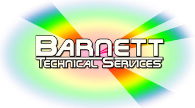Laser-Based Gas Analyzers in Greenhouse Gas Emissions Detection and Analysis

As the impact of climate change intensifies, accurate and reliable methods of detecting and analyzing greenhouse gas (GHG) emissions have become critical for industries, governments, and researchers. Whether it’s methane escaping from livestock operations, nitrous oxide emissions in agricultural zones, or carbon dioxide buildup in urban areas, quantifying the concentration of these gases is essential for mitigation and compliance. Laser-based gas analyzers have become an essential component in detecting and analyzing greenhouse gases with precision and consistency.
What Are Laser-Based Gas Analyzers?
Laser-based gas analyzers utilize highly sensitive spectroscopic techniques to detect and quantify trace gases in real time. Among the most advanced and widely used methods is Off-Axis Integrated Cavity Output Spectroscopy (OA-ICOS)—an evolution of Cavity Ring-Down Spectroscopy (CRDS)—which delivers superior accuracy, stability, and speed.
These instruments work by directing laser light into a high-reflectivity optical cavity containing the gas sample. As light interacts with the gas molecules, it is absorbed at specific wavelengths characteristic of the gas in the cell. By analyzing the absorption pattern, the system calculates the gas concentration with exceptional precision.
Why Laser-Based Technology Excels at GHG Monitoring
Laser-based gas analyzers offer several distinct advantages over traditional detection methods:
- High Sensitivity: Capable of detecting gases at parts-per-billion (ppb) or even parts-per-trillion (ppt) levels.
- Fast Response Time: Enables real-time, in-situ measurements—critical for dynamic environments.
- Selectivity and Accuracy: Reduces false positives and ensures reliable readings in complex gas mixtures.
- Flexible Deployment: Available in portable, drone-mounted, underwater, and laboratory/stationary formats.
- Low Maintenance: Minimal calibration needs and no consumables make them cost-effective over time.
Applications in Greenhouse Gas Emissions Detection
Laser-based gas analyzers are widely used in a variety of sectors to detect and measure emissions with precision:
Wastewater Treatment: Monitor methane and CO₂ emissions during anaerobic digestion processes and aeration stages.
Urban Air Monitoring: Track air pollution and GHG levels in real time for climate research, public health, and smart city initiatives.
Agricultural and Livestock Areas: Measure methane from enteric fermentation and manure decomposition, enabling better management practices.
Geological Applications: Quantify gas fluxes from soil, volcanic activity, and subsurface emissions for both research and exploration.
Emergency Response: Rapidly detect and analyze toxic or flammable gases in disaster zones, ensuring safe and informed decision-making.
From Detection to Analysis: Deriving Actionable Insights
Detection is only the first step. Laser-based analyzers also provide deep analytical capabilities:
- Concentration Monitoring: Accurately track gas levels over time.
- Isotopic Analysis: Differentiate between natural and anthropogenic sources of gases like methane and carbon dioxide.
- Data Integration: Export data into environmental models, compliance reports, or real-time dashboards.
- Flux Calculations: Estimate greenhouse gas exchange between land, water, and atmosphere.
These insights empower researchers and environmental professionals to design effective emission reduction strategies and meet increasingly stringent regulatory requirements.
Bringing It All Together
Laser-based gas analyzers are transforming the way we detect and analyze greenhouse gas emissions. With unparalleled accuracy, speed, and adaptability, they serve as a critical tool in environmental science, regulatory compliance, and climate action.
At Barnett Technical Services, we are proud to support this mission by offering ABB-LGR analyzers configured for a wide range of trace gas applications. Whether you’re measuring methane in the field or analyzing isotopes in the lab, we can help you find the right solution.
Want to learn more?
Contact us or explore our trace gas analyzer solutions to see how precision gas measurement can support your work.
